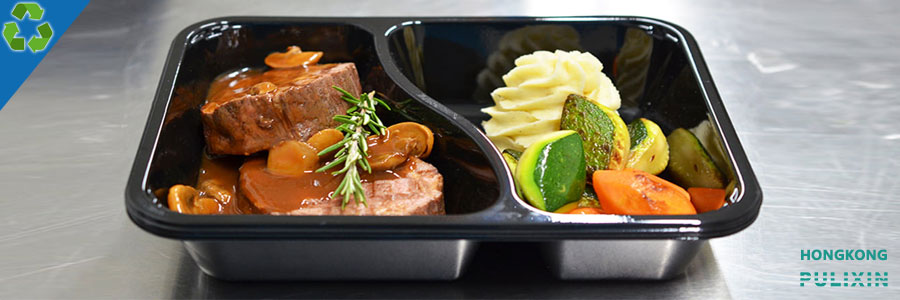We will contact you within 24 hours about sending free samples
We will contact you within 24 hours about sending free samples
Posted By in Knowledge - PET/PP/PS Sheet manufacturer with 20 years of experience

CPET trays are a popular choice in the packaging industry, known for their durability, heat resistance, and versatility. In this article, we will delve into the composition of CPET trays, their properties, recyclability, and the key differences between CPET and PET.
CPET stands for Crystallized Polyethylene Terephthalate, and CPET trays are manufactured using this material. CPET is a thermoplastic polymer derived from polyester and is created through a crystallization process. It consists of repeating units of ethylene terephthalate monomers, which are linked together to form a strong and rigid structure.
A CPET tray is a type of food packaging tray made from CPET material. It is specifically designed to withstand high temperatures, making it suitable for various heating applications. CPET trays are commonly used for ready-to-eat meals, convenience foods, and other food products that require heating.
CPET is a type of plastic known as Crystallized Polyethylene Terephthalate. It is a variant of PET (Polyethylene Terephthalate) that has undergone a crystallization process to enhance its heat resistance and rigidity. CPET retains the desirable properties of PET while offering improved performance in high-temperature applications.
Yes, CPET is recyclable, making it an environmentally friendly packaging option. CPET trays can be recycled through the appropriate recycling channels. The material can be collected, processed, and used to produce new plastic products, reducing the reliance on virgin materials and minimizing waste.
It's important to note that recycling capabilities may vary depending on the local recycling infrastructure and regulations. Consumers and businesses should adhere to the recycling guidelines provided by their local authorities to ensure proper disposal and recycling of CPET trays.
CPET and PET are both types of plastics, but there are key differences between them:
Composition: CPET is a crystallized form of PET. The crystallization process imparts enhanced heat resistance and rigidity to CPET, making it suitable for high-temperature applications. PET, on the other hand, is an amorphous form of the material and is widely used for various packaging applications.
Heat Resistance: CPET exhibits superior heat resistance compared to PET. CPET can withstand higher temperatures without deforming or melting, making it suitable for oven and microwave use. PET has lower heat resistance and is commonly used for products that do not require high-temperature applications.
Applications: CPET trays are primarily used in the food packaging industry for ready-to-eat meals, convenience foods, and products that require heating. PET is commonly used for beverage bottles, food containers, and packaging applications that do not involve high heat exposure.
CPET trays offer excellent heat resistance, durability, and barrier properties, making them a preferred choice for food packaging. Their recyclability adds to their appeal as an environmentally friendly option. Understanding the composition, properties, and differences between CPET and PET can help businesses and consumers make informed decisions when selecting packaging materials.
To learn more about CPET trays and their applications, visit Pulixin HK.
| Property | CPET Trays |
|---|---|
| Heat Resistance | Up to 400°F (204°C) |
| Durability | Highly durable |
| Barrier | Moisture, oxygen, etc. |
| Transparency | Excellent clarity |
| Recyclability | Yes |

We hope this article has provided valuable insights into CPET trays, their composition, properties, recyclability, and the distinction between CPET and PET. If you have any further questions or would like to explore CPET packaging solutions, please visit our website at Pulixin HK.
Note: The information provided in this article is for informational purposes only and should not be considered as professional advice. Please consult with experts and adhere to local regulations for specific packaging requirements and recycling guidelines.